AWS News Blog
New – AWS WAF
Have you ever taken the time to watch the access and error logs from your web server scroll past? In addition to legitimate well-formed requests from users and spiders, you will probably see all sorts of unseemly and downright scary requests far too often. For example, I checked the logs for one of my servers and found that someone or something was looking for popular packages that are often installed at well-known locations (I have changed the source IP address to 10.11.12.217 for illustrative purposes):

If any of those probes had succeeded, the attacker could then try a couple of avenues to gain access to my server. They could run through a list of common (or default) user names and passwords, or they could attempt to exploit a known system, language, or application vulnerability (perhaps powered by SQL injection or cross-site request forgery) as the next step.
Like it or not, these illegitimate requests are going to be flowing in 24×7. Even if you keep your servers well-patched and do what you can to keep the attack surface as small as possible, there’s always room to add an additional layer of protection.
New AWS WAF
In order to help you to do this, we are launching AWS Web Application Firewall today. As you will see when you read this post, AWS WAF will allow you to protect your AWS-powered web applications from application-layer attacks such as those I described above.
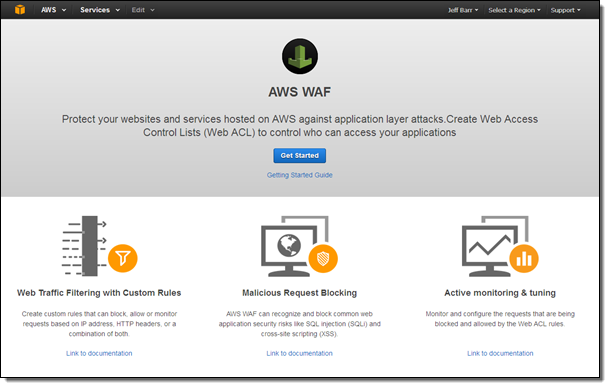
You can set it up and start protecting your applications in minutes. You simply create one or more web Access Control Lists (web ACLs), each containing rules (set of conditions defining acceptable or unacceptable requests/IP addresses) and actions to take when a rule is satisfied. Then you attach the web ACL to your application’s Amazon CloudFront distribution.
From that point forward, incoming HTTP and HTTPS requests that arrive via the distribution will be checked against each rule in the associated web ACL. The conditions with the rules can be positive (allow certain requests or IP addresses) or negative (block certain requests or IP addresses).
I can use the rules and the conditions in many different ways. For example, I could create a rule that would block all access from the IP address shown above. If I were getting similar requests from many different IP addresses, I could choose to block on one or more strings in the URI such as “/typo3/” or “/xampp/.” I could also choose to create rules that would allow access to the actual functioning URIs within my application, and block all others. I can also create rules that guard against various forms of SQL injection.
AWS WAF Concepts
Let’s talk about conditions, rules, web ACLs, and actions. I’ll illustrate some of my points with screen shots of the AWS WAF console.
Conditions inspect incoming requests. They can look at the request URI, the query string, a specific HTTP header, or the HTTP method (GET, PUT, and so forth):
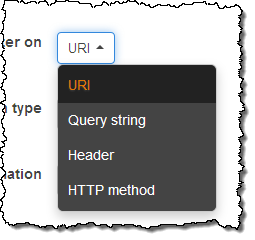
Because attackers often attempt to camouflage their requests in devious ways, conditions can also include transformations that are performed on the request before the content is inspected:
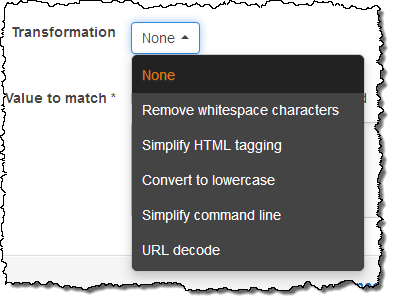
Conditions can also look at the incoming IP address, and can match a /8, /16, or /24 range. They can also use a /32 to match a single IP address:
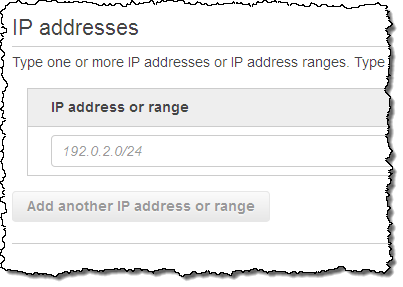
Rules reference one or more conditions, all of which must be satisfied in order to make the rule active. For example, one rule could reference an IP-based rule and a request-based rule in order to block access to certain content. Each rule also generates Amazon CloudWatch metrics.
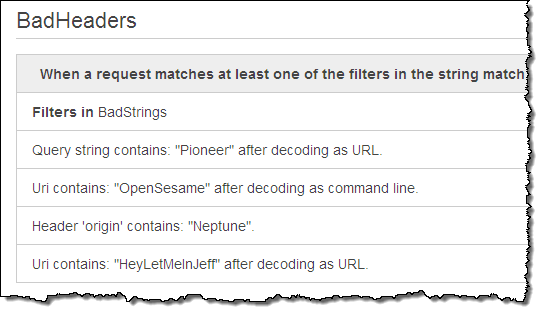
Actions are part of rules, and denote the action to be taken when a request matches all of the conditions in a rule. An action can allow a request to go through, block it, or simply count the number of times that the rule matches (this is good for evaluating potential new rules before using a more decisive action).

Web ACLs in turn reference one or more rules, along with an action for each rule. Each incoming request for a distribution is evaluated against successive rules until a request matches all of the conditions in the rule, then the action associated with the rule is taken. If no rule matches, then the default action (block or allow the request) is taken.
WAF in Action
Let’s go through the process of creating a condition, a rule, and a web ACL. I’ll do this through the console, but you can also use the AWS Command Line Interface (AWS CLI), AWS Tools for Windows PowerShell, or the Web Application Firewall API.
The console leads me through the steps. I start by creating a web ACL called ProtectSite:
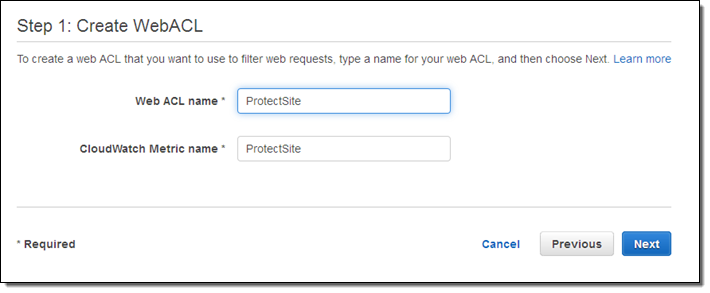
Then I create conditions that will allow or block content:
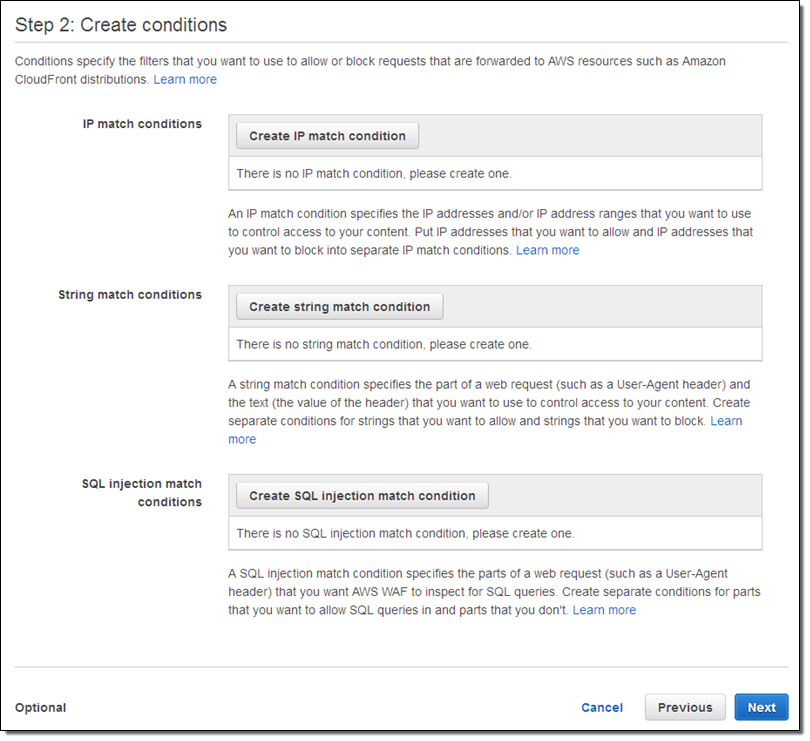
I can create an IP match condition called BadIP to block the (fake) IP address from my server log:
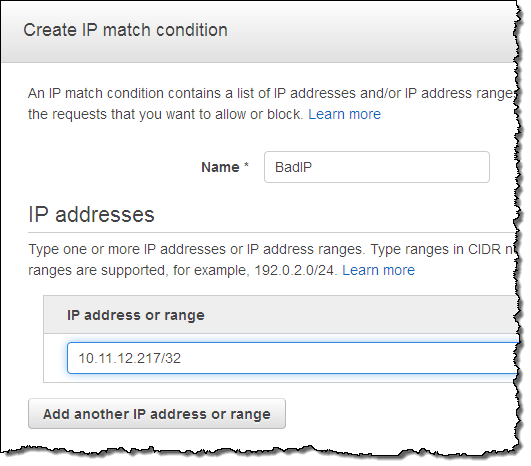
And then I used the condition to create a rule called BadCompany:
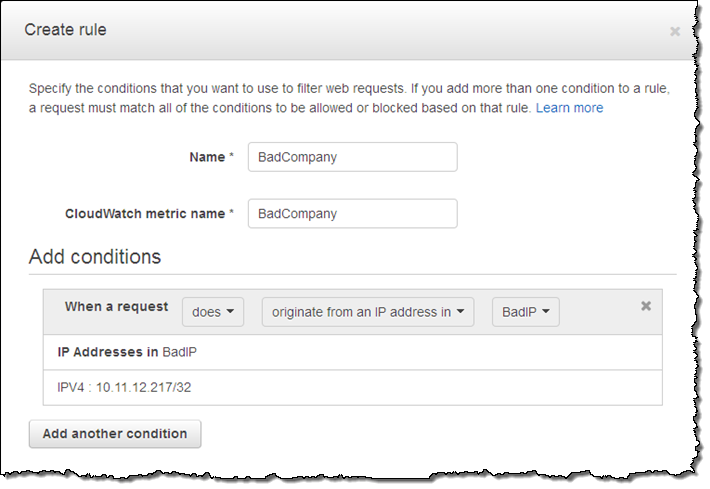
And now I select the rule and chose the action (a single web ACL can use multiple rules; my example uses just one):
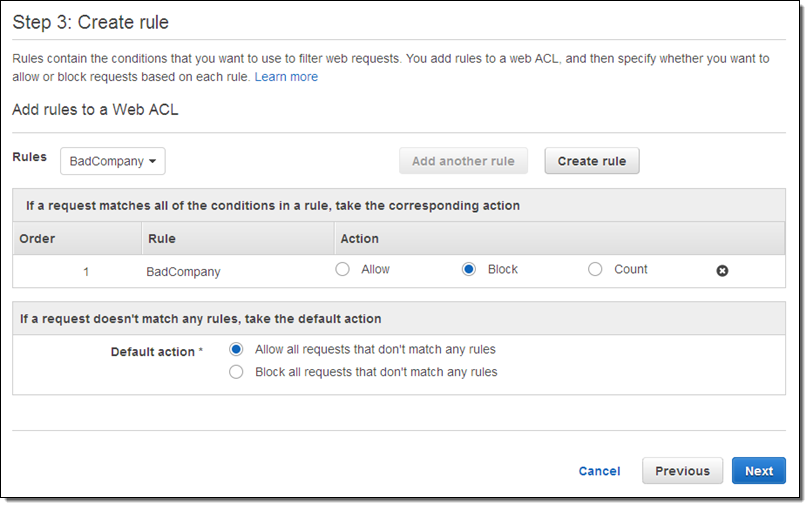
As you can see above, the default action is to allow requests through. The net effect is that this combination (condition + rule + web ACL) will block incoming traffic from 10.11.12.217 and allow everything else to go through.
The next step is to associate my new web ACL with a CloudFront distribution (we’ll add more services over time):
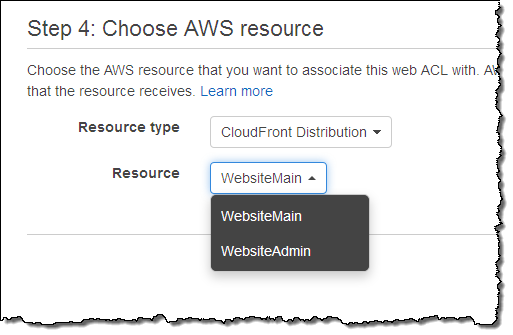
A single web ACL can be associated with any number of distributions. However, each distribution can be associated with one web ACL.
The web ACL will take effect within minutes. I can inspect its CloudWatch metrics to understand how often each rule and each web ACL is activated.
API Power
Everything that I have shown you above can also be accessed from your own code:
CreateIPSet,CreateByteMatchSet, andCreateSqlInjectionMatchSetare used to create conditions.CreateRuleis used to create rules from conditions.CreateWebACLis used to create web ACLs from rules.UpdateWebACLis used to associate a web ACL with a CloudFront distribution.
There are also functions to list, update, and delete conditions, rules, and web ACLs.
The GetSampledRequests function gives you access to up to 5,000 of the requests that were evaluated against a particular rule within a time period that you specify. The response includes detailed information about each of the requests, including the action taken (ALLOW, BLOCK, or COUNT).
Available Now
AWS WAF is available today anywhere CloudFront is available. Pricing is $5 per web ACL, $1 per rule, and $0.60 per million HTTP requests.
— Jeff;